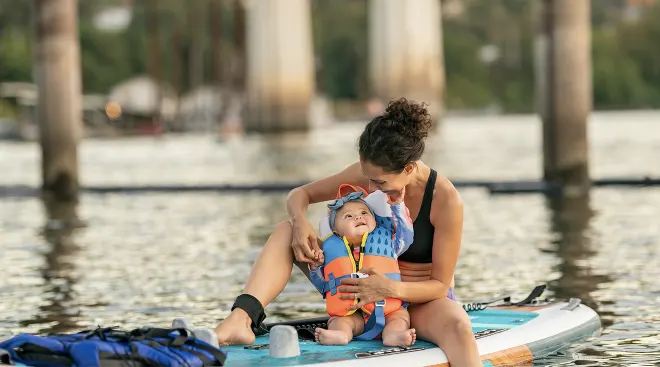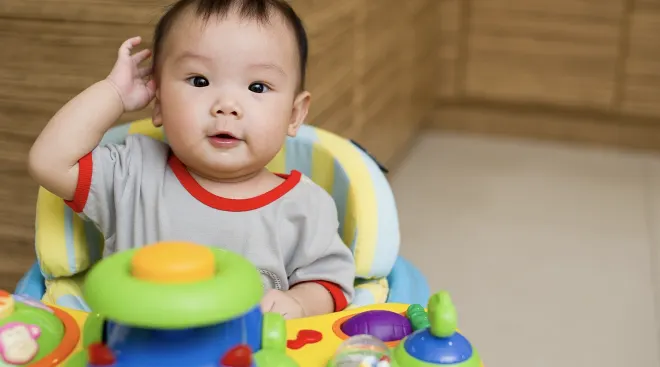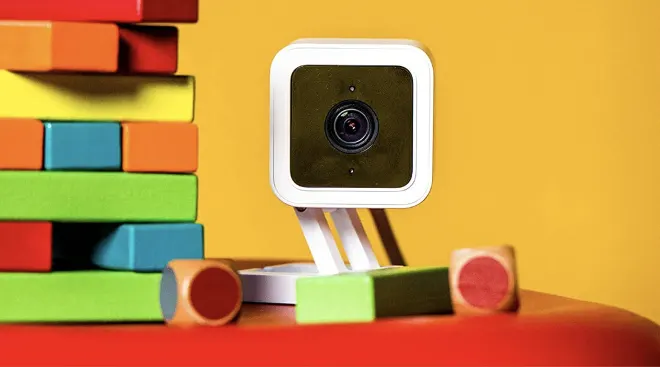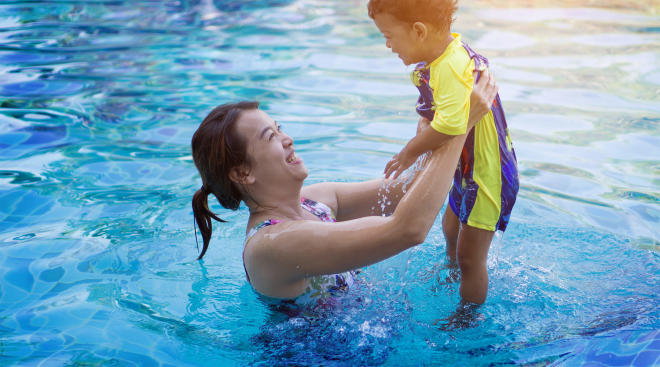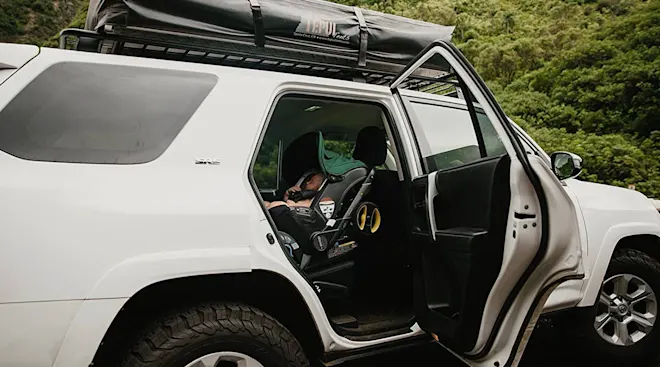11 Essential Winter Safety Tips for Baby
For many new parents, the thought of driving on icy roads with baby in the back seat can be terrifying. And pushing a stroller while tackling errands in sub-freezing temperatures? Hardly a walk in the park either.
While you can never be too careful, there’s no need to be stuck inside all season long either. “You can’t keep your baby in a bubble, but you can try to eliminate the obvious risks,” says Daniel S. Ganjian, MD, a pediatrician at Providence Saint John’s Health Center in Santa Monica, California. Keep these simple winter safety tips in mind to protect baby through the cold months.
It’s an inconvenient truth when it comes to winter, even if you love the snow and holiday festivities: It’s just too darn cold out! But there’s more to keeping safe and comfy than simply slipping on a big coat.
Dress baby just right
“It’s easy to understand why new parents feel the need to over-bundle their babies,” says Sydney Ziverts, a health investigator for Consumer Safety. “They spend the first nine months of their lives inside the balmy 98.6-degree spa of their mother’s womb, so they must like to be toasty all the time, right? Unfortunately, that assumption is what leads to a rise in SIDS during the winter months.”
To be safe: The temperature of their room should be comfortable enough to sleep in light clothes without any blankets. Keep the crib clear of blankets, pillows and wedges—they’re a risk for babies under age one. Winter PJs are enough to keep baby warm at night, and you can always swaddle small babies nice and tight, as long as you make sure the blanket is away from their face. When you head outside, remember the golden rule: “Dress baby in as many layers as you need, plus one—that’s usually good enough because you want to prevent overheating,” Ganjian says.
Be extra-careful when it’s freezing
Once the mercury dips below 32 degrees Fahrenheit, it’s best to run your errands alone, if you’re doing them on foot. “Skip the daily walk, as tempting as it may be,” Ziverts says. Driving? Be mindful of the temperature too. “It’s fine to dash your baby to the car when it’s very cold”—watch your step and avoid slipping, of course—“but it’s a good idea to warm up your vehicle first,” she says.
Winterize the stroller
You may need to put a stroller weather shield on sooner than you think. “Any time it’s windy and any time the temperature is less than 60 degrees, you want to put a weather shield on your stroller,” Ganjian says. And once it’s freezing, it’s definitely time to put one on. Remember, even without wind, the sheer movement of the stroller creates a slight breeze, and baby will be colder than you because you’re moving and they’re not. Unlike blankets (which should be tucked below baby’s face), these shields protect baby’s entire head and body from the chill without risk of covering the mouth and nose. These typically feature small openings that allow for proper ventilation. If not, “make sure the stroller isn’t completely covered,” Ziverts says.
In addition, consider a footmuff. These sleeping-bag-like pouches attach to the stroller so you can strap baby in and zip it right up.
Be wary of space heaters
Many parents make the mistake of using a space heater to get the room extra-warm—but it doesn’t have to be totally toasty. It simply has to be a comfortable temperature. If you absolutely need a space heater to get it there, check your model to see if it’s been recalled. “Make sure it meets the newest safety standards, and don’t use hand-me-downs if possible,” Ganjian advises. This way, you know it’s in tip-top shape, and you can contact the maker for a refund or replacement if it isn’t. Finally, avoid fire hazards: Never put it next to a curtain or carpet.
Cold temperatures aside, dry air and enclosed spaces step up baby’s chances of a host of winter ailments, from itchiness to congestion. Here’s how to keep them at bay.
Limit bath time
No matter the season, there’s no need to bathe baby every day. And that’s even truer in the winter when the air is much drier and when excessive bathing can really dry out skin and aggravate cradle cap. “Babies don’t sweat, and you don’t want to get rid of the good oils in their skin,” Ganjian says. “As long as the child isn’t visibly soiled, you can bathe him once or twice a week, and always moisturize the skin after.” Another winter skin care tip: Apply lotion at least once a day, and again on bath days. Ganjian recommends using hypoallergenic petroleum-jelly-based moisturizers, like Vaseline; they’re thicker and act as a barrier to keep moisture in and the elements out.
Protect against viruses
Moms are always looking for winter safety tips on how to avoid the sniffles, especially with the rise of COVID-19. With cold weather, our immune system goes down, Ganjian says, so kids are at greater risk for getting sick. To minimize that risk, get the grown-ups to practice good hand hygiene, mask-wearing and social distancing when applicable. When you come home, always wash your hands before touching baby (especially if you’ve been shaking hands with others), Ganjian says. Be unapologetically strict with guests too. While everyone wants to coo over baby, don’t pass them around—more contact means more exposure to more germs. Instead, hold baby yourself to show them off, and, for those who insist on holding baby, ask them to wash hands first. Obviously, keep baby away from folks that are sneezing and coughing (even if they swear it’s “just allergies”).
Come rain, sleet or snow, nothing stops parents who get stuff done. Safeguard against treacherous conditions well before the first storm hits with these winter safety tips.
Avoid carrying baby
If you’re headed outside on foot and the terrain is iffy, leave the baby carrier at home and opt for a stroller, Ganjian says. After all, the only thing worse than slipping and falling is slipping and falling with baby in tow.
Stay on top of the shoveling
Keep snow plowed around your house, and use snow salt. Before you bring baby outside, scout out the conditions. “If your baby is someplace safe and secure [indoors], head outside to warm up your car and make sure you have a clear path through the snow to your vehicle,” Ziverts says. “You never know what could be hiding under a few inches of snow—ice, pinecones or a dropped shovel—that might cause you to trip. Don’t leave your baby unattended for too long, but do take a few moments to shovel a path if you need.”
Winterize your car
This is one of the most crucial winter safety tips to follow: Make sure your car is winter-ready. “If you live in a snowy region, take your car in before the first storm,” Ziverts says. “You don’t need four-wheel drive, but invest in a good set of snow tires, and replace your windshield wipers before the flurries fly, especially with baby on board.” Just in case, pack a winter-ready emergency kit, which should include, among other things, an ice scraper, cat litter (to prevent slipping) and a blanket. If you don’t have snow tires, check that your regular tires have enough traction and tread on them.
Drive cautiously
Be especially conscientious about the usual precautions now that you have baby on board: Avoid driving immediately after a snowstorm. Instead, wait until the roads are plowed and the conditions are safe. Be sure to give yourself extra traveling time, and drive slowly. Always check the exhaust pipe before heating up your car. If it’s clogged with snow, clear it out before starting your vehicle. The blockage can cause a fatal backup of carbon monoxide inside your car that you won’t see or smell.
Practice car seat safety
With more obstacles on the road in winter than any other time of year, car seat safety is particularly crucial—so make sure the seat isn’t expired or damaged and that it’s installed correctly for your child’s age and weight.
Be aware that your child’s coat can become a safety hazard in more ways than one: If you keep it on and the car warms up, your sleeping baby can overheat, putting them at risk for SIDS. What’s more, coats can render the safety harness less effective. “If the coat is too bulky, the safety harness may need to be loosened to latch the buckle,” Ziverts says, “and this could endanger your baby in an accident—the force of an abrupt stop can compress the coat and cause your baby to slip out of the restraint.”
The take home? Warm up the car to a comfortable temperature first, so you can buckle baby in without the coat. Of course, if you still feel the need to use a blanket, keep it away from baby’s face—but chances are they might not even need it. “If you’re getting hot, just think of how hot your baby is in those fleece jammies and coat,” Ziverts says. If baby needs a wardrobe adjustment mid-trip, she adds, pull over when it’s safe and tend to baby.
Please note: The Bump and the materials and information it contains are not intended to, and do not constitute, medical or other health advice or diagnosis and should not be used as such. You should always consult with a qualified physician or health professional about your specific circumstances.
Plus, more from The Bump:
Daniel S. Ganjian, MD, is a pediatrician at Providence Saint John’s Health Center in Santa Monica, California. He earned his medical degree from the University of California, Irvine and completed his pediatric training at Harbor-UCLA Medical Center and Maria Fareri Children's Hospital in New York.
Sydney Ziverts is a health investigator for Consumer Safety. She earned bachelor's degree in english literature from Coastal Carolina University and a certification in Health Literacy for Public Health Professionals from the CDC.
Department of Motor Vehicles, How To Pack An Emergency Kit,
Learn how we ensure the accuracy of our content through our editorial and medical review process.
Navigate forward to interact with the calendar and select a date. Press the question mark key to get the keyboard shortcuts for changing dates.




































